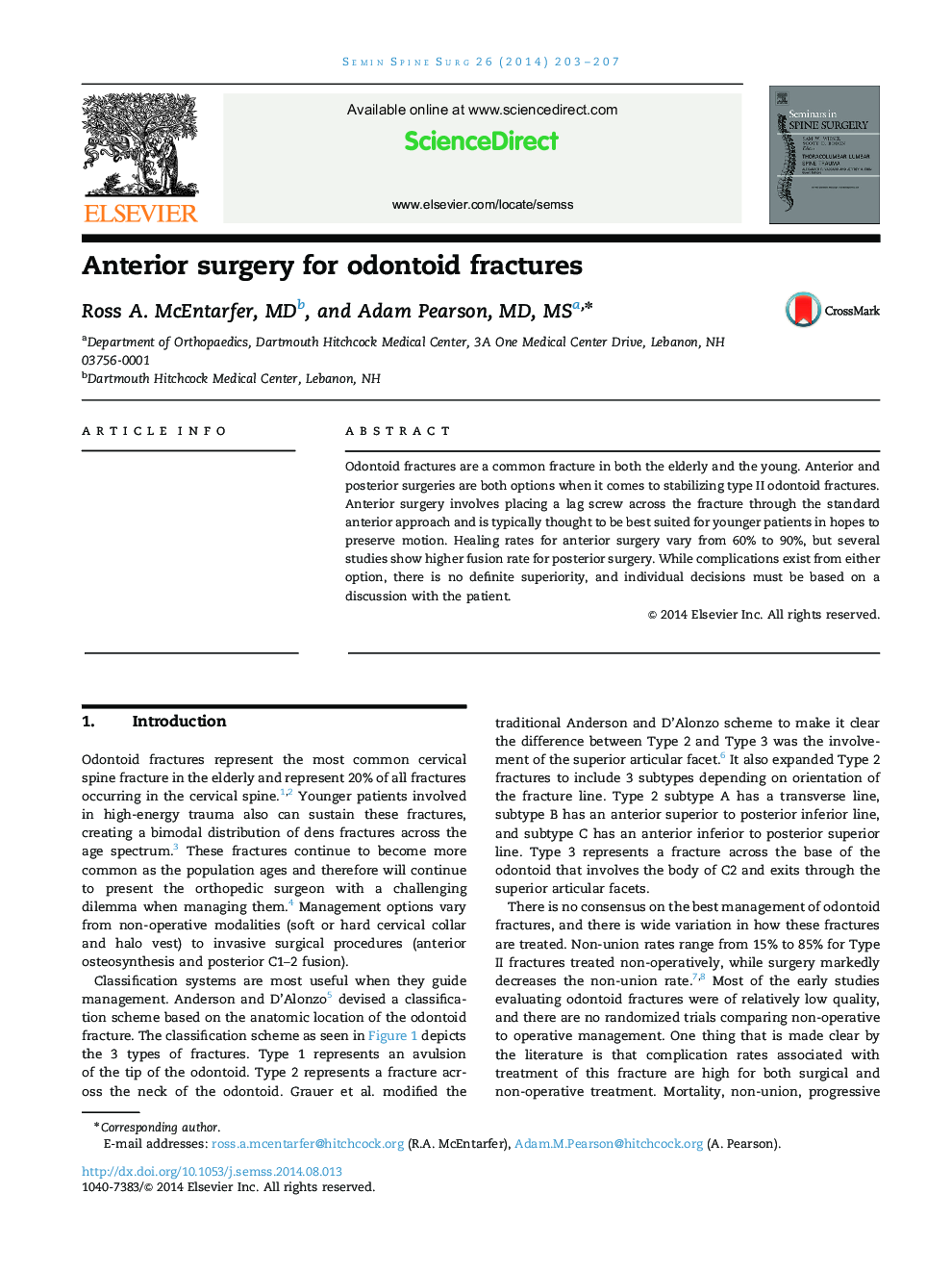| Article ID | Journal | Published Year | Pages | File Type |
|---|---|---|---|---|
| 4094621 | Seminars in Spine Surgery | 2014 | 5 Pages |
Abstract
Odontoid fractures are a common fracture in both the elderly and the young. Anterior and posterior surgeries are both options when it comes to stabilizing type II odontoid fractures. Anterior surgery involves placing a lag screw across the fracture through the standard anterior approach and is typically thought to be best suited for younger patients in hopes to preserve motion. Healing rates for anterior surgery vary from 60% to 90%, but several studies show higher fusion rate for posterior surgery. While complications exist from either option, there is no definite superiority, and individual decisions must be based on a discussion with the patient.
Related Topics
Health Sciences
Medicine and Dentistry
Orthopedics, Sports Medicine and Rehabilitation
Authors
Ross A. McEntarfer, Adam Pearson,
